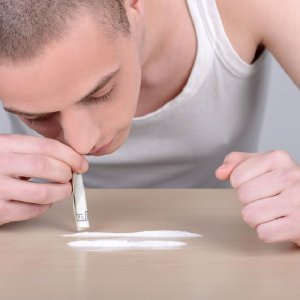Long Term vs. Short Term:
Timeline of Heroin Effects on Body

An individual who has fallen into the trap of heroin use, abuse or addiction is struggling against the devastating effects of one of the most potent and addictive drug substances currently in existence. Heroin is a member of the opiate family of drugs, which are derived from the seed pod of the Asian poppy plant. Where opium is refined in order to create morphine, morphine is further refined in order to create heroin.
Like other opiate drug substances, heroin works by entering the brain and binding to opioid receptors there. This can have two marked effects—an elimination of physical pain and a surge of pleasurable feelings often called a heroin rush. A body that is exposed to heroin use can quickly become tolerant of and dependent upon this drug substance, forcing the individual to compulsively continue using it despite the damaging effects it is having on their life. Fortunately, when someone understands the basic facts on heroin, they are often better prepared to spot heroin abuse and addiction in someone they love and can then take action to help them get the treatment they need.
How to Spot a Heroin Addict
Initial signs of heroin use can be difficult to spot, especially if one is not alert to the fact that drug use may be occurring. It is also not unusual for a heroin addict to deliberately hide signs of their heroin use from others, making them even more difficult to notice. However, if one knows what to look for, these signs are clearly evident. Some of the early signs of heroin use include warm flushing of the skin, dry mouth, a heavy feeling in the extremities, nausea, vomiting, itching, intermittent periods of drowsiness and wakefulness, cloudy mental functioning, and reduced respiration and heart rate. The individual may also seem unaffected by or impervious to pain, as opiates can block the body’s ability to communicate pain.
Where the individual’s body has learned to tolerate the presence of heroin, the individual will no longer experience the same desirable euphoric rush through the same amount of heroin use. This can drive them to increase the frequency or amount of heroin use, sometimes both, and even the method by which they deliver heroin to their system. For example, injecting and smoking heroin will deliver it more rapidly to the brain and cause a more intense euphoric rush than snorting it.
As heroin use continues, the long-term effects this has on the individual’s body grow increasingly more serious and devastating. Heroin can actually change the basic physical structure and physiology of the brain, causing imbalances. This can impair the individual’s ability to make decisions, regular behavior and respond appropriately to stressful situations. In fact, their solution for everything they encounter may be to simply take more heroin, which only serves to exacerbate the problem.
When the body has become fully used to the presence of heroin, it develops a physical dependence upon this drug. This means that the body actually depends upon heroin in order to function “normally,” essentially breaking down basic patterns of operation in order to make room for heroin and its effects. One of the most unfortunate side effects of heroin dependence is the withdrawal symptoms that occur if a sufficient quantity of heroin is not kept in the body at all times. These withdrawal symptoms are extremely uncomfortable and even painful to experience and can include restlessness, muscle and bone pain, insomnia, diarrhea, vomiting, cold flashes accompanied by goosebumps, and involuntary leg movements. Even where an individual recognizes that they have a problem with heroin use and need to put an end to it, these withdrawal symptoms can drive them to continue using heroin.
No matter how heroin is delivered to the body, it can be extremely addictive and damaging. The only real solution is for the individual to receive full, professional rehabilitation treatment, preferably at a residential rehabilitation treatment facility where they will be in a drug-free, safe, and calm environment. Fortunately, heroin addiction can and has been successfully resolved time and again with the right treatment and the individual can take back control of their life and their future.


